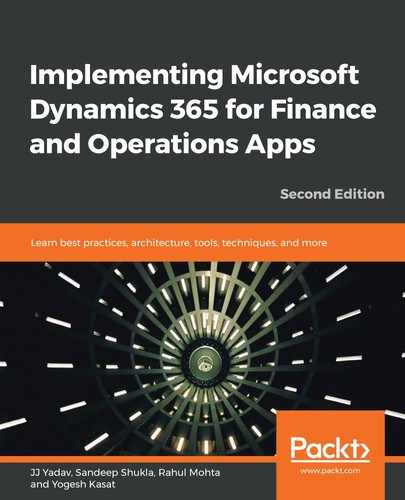In a typical integration scenario, the implementation team works with the business users, internal IT, and in some cases, representatives of the applications that have been identified for integration to determine the requirements in detail. The following questions must be answered and documented so that you have a successful integration solution. Often, the answers to these questions are not clear-cut and will require modeling the different scenarios to develop the best solution. That being said, starting this process early on in the project is the key. Let's take a look at some of these questions:
|
Questions |
Example values |
Effects on design |
|
What type of data needs to be integrated? |
Sales orders, purchase orders, and so on. |
This will help you determine whether you can use any existing data entities or need to create a new one. |
|
What kind of integration type will the other applications support? |
XML, web services, and flat file. |
This will help you determine the technology to be used. |
|
What is the availability of the systems that are being integrated? What are the requirements of real-time data exchanges? |
Asynchronous or synchronous. |
This will help you determine the integration technology and configuration requirements. |
|
Is the integration based on the pull model or the push model? |
Pull, push, or event-driven. |
This will help you determine the technology and configuration of the exchange event. |
|
What is the volume of transactions? |
Number of transactions (daily, weekly, monthly, or yearly). |
This will help you determine the scale of integration, suitable integration technology, and deployment options. |
|
What will be the frequency of data exchange? |
Timing per second, minute, and hour. |
This information helps you determine how to configure the integration solution. |
|
What business rules are associated with the data? |
The sequence of events and exception handling. |
This will help you determine the customization required for the document exchange. |
|
Does the data need to be transformed? Will the transformations be performed before data is sent or when data is received? |
The extent of transformation – field-level mapping, value mapping, and flat file to XML or vice versa. |
This will help you determine which integration configuration and transformations need to be used. |
|
Is the external system an in-house system or an external trading partner? |
Security and encryption requirements. |
This will help you determine how the users and security need to be configured. |
Making a decision regarding what synchronous or asynchronous integration pattern to use is key. Now, let's take a look at the pros and cons of each.
